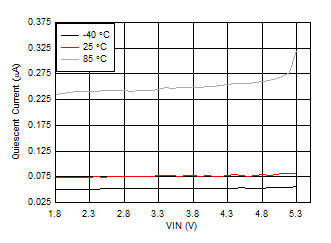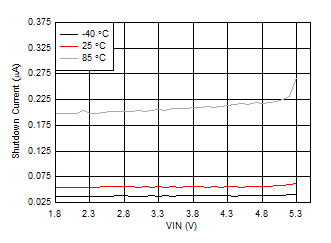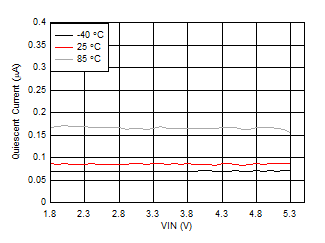SLVSET3D March 2020 – October 2020 TPS63900
PRODUCTION DATA
- 1 Features
- 2 Applications
- 3 Description
- 4 Revision History
- 5 Pin Configuration and Functions
- 6 Specifications
-
7 Detailed Description
- 7.1 Overview
- 7.2 Functional Block Diagram
- 7.3 Feature Description
- 7.4 Device Functional Modes
- 8 Application and Implementation
- 9 Power Supply Recommendations
- 10Layout
- 11Device and Documentation Support
- 12Mechanical, Packaging, and Orderable Information
Package Options
Mechanical Data (Package|Pins)
- DSK|10
Thermal pad, mechanical data (Package|Pins)
- DSK|10
Orderable Information
6.6 Typical Characteristics

| VO = 5.1 V | EN = HIGH | IO = 0 mA, device not switching |

| VO = 5.1 V | EN = LOW |

| VO = 5.1 V | EN = HIGH | IO = 0 mA, device not switching |